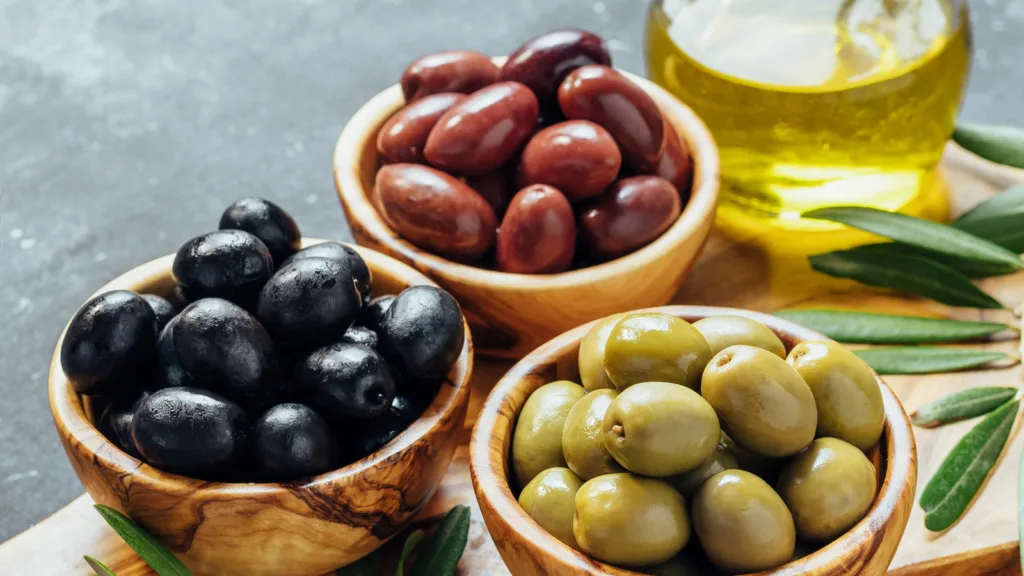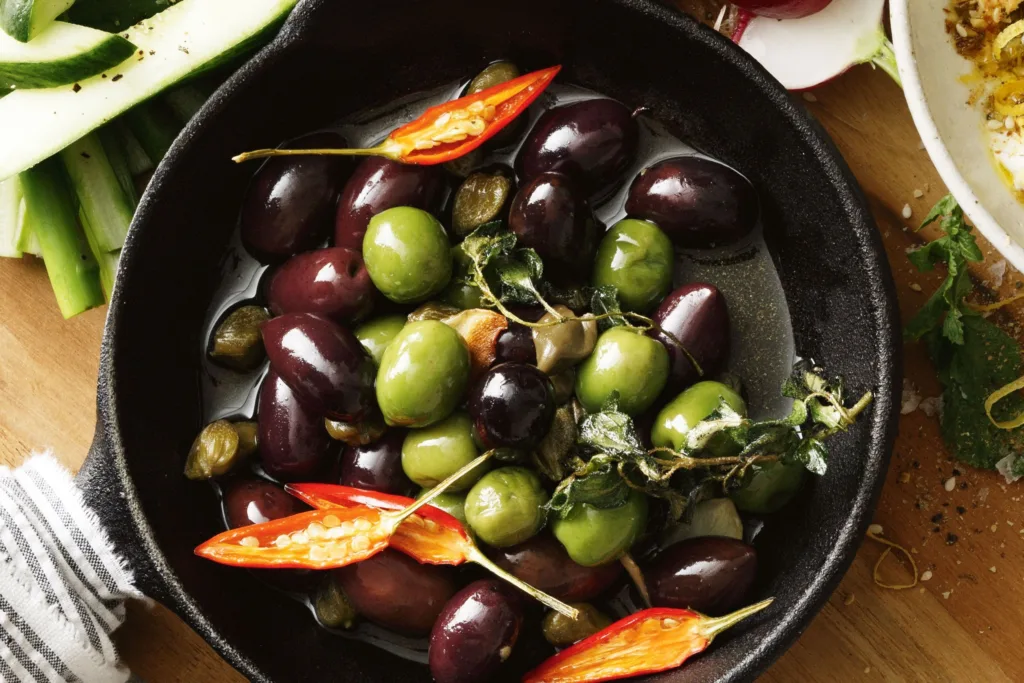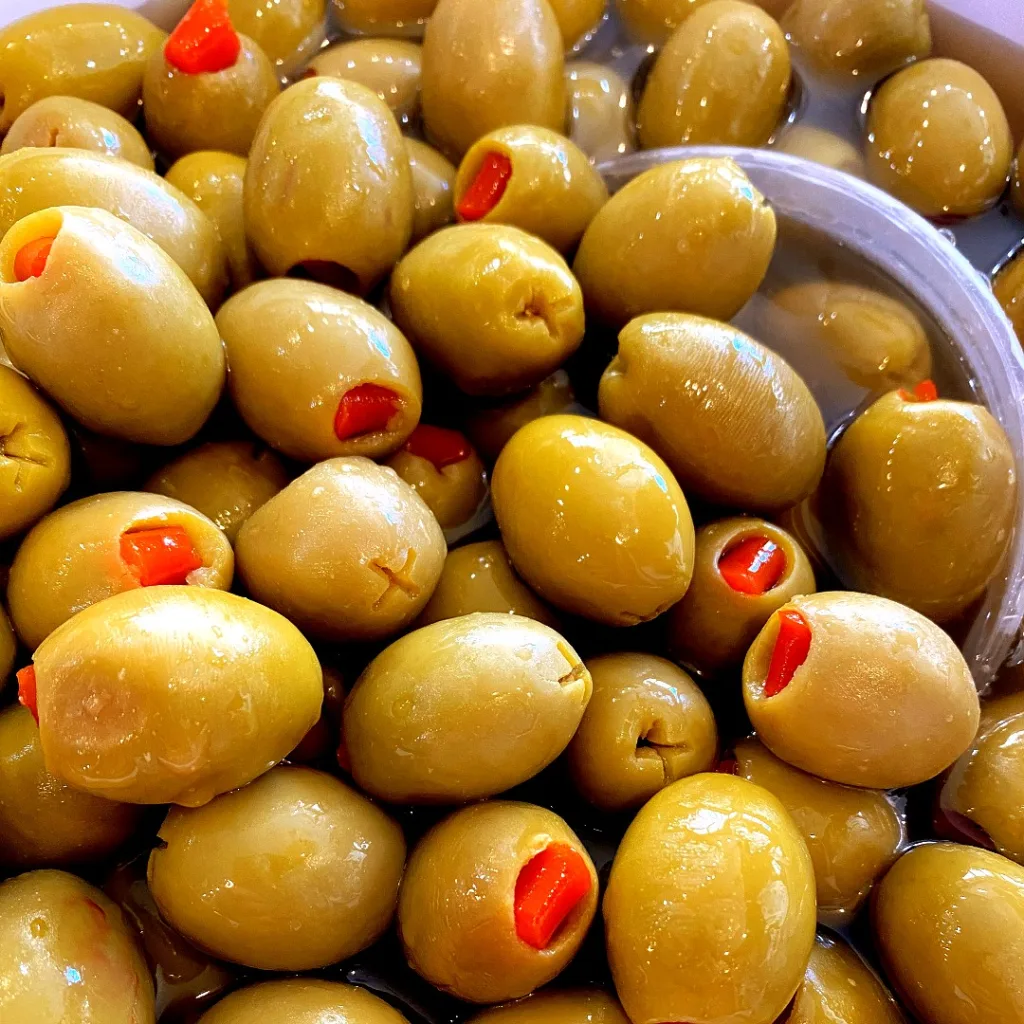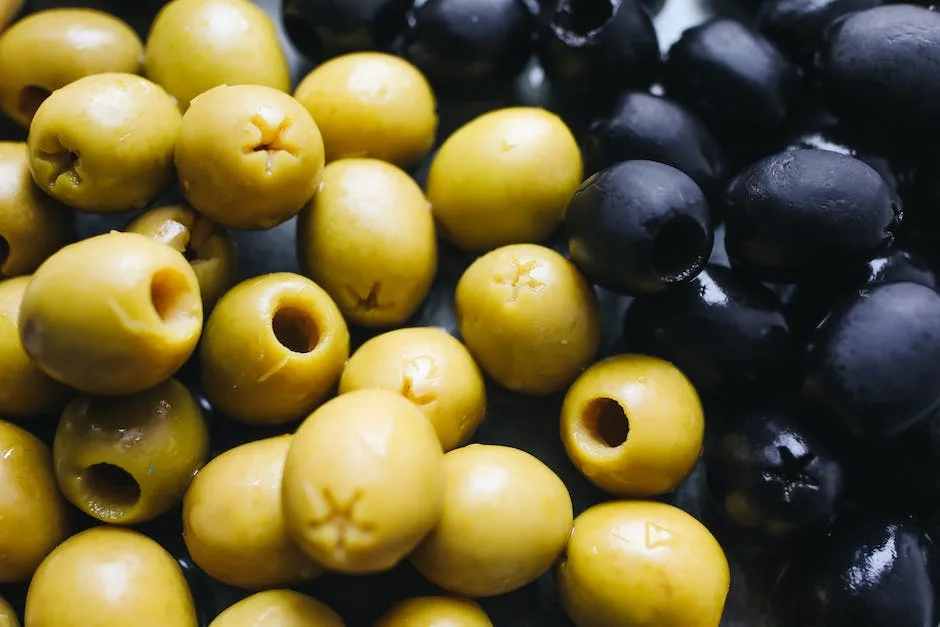Let’s talk about the Mediterranean diet. If you haven’t heard of it yet, it’s one of the most popular and proven healthy eating plans out there. This delicious way of eating is inspired by traditional cuisine from seaside countries like Italy, Greece, and Spain. The Mediterranean diet has been getting a lot of well-deserved recognition over the past few years for its ability to boost weight loss and support overall wellness. There’s a reason everyone’s talking about it!
One signature food you’ll find in the Mediterranean diet? The humble olive. Yep, these little flavorful fruits play a big role. Olives happen to be nutritional powerhouses packed with good-for-you fats that are excellent for weight management and heart health. Today we’re diving into everything olives have to offer, and how incorporating them into your eating plan can accelerate your weight loss success.

What Makes the Mediterranean Diet So Special?
So what makes the Mediterranean diet such a shining star? There are a few core principles that set it apart:
- An abundance of plant foods like fruits, veggies, whole grains, beans, herbs and spices. These provide key nutrients for optimal health.
- Healthy fats like olive oil as the primary fat source. More on why this is so beneficial later!
- Moderate amounts of fish, poultry, eggs and dairy compared to less red meat. Fish is full of omega-3’s to fight inflammation.
- Plenty of water to stay hydrated. Some wine is encouraged too, especially red wine with all those antioxidants!
- An active lifestyle and enjoying meals with family and friends. It’s as much a lifestyle as a diet!
By focusing on natural, minimally processed foods that pack a nutritional punch, the Mediterranean diet helps manage hunger, reduce cravings, and promote healthy body weight. Study after study consistently associates it with sustainable weight loss, reduced belly fat, and a lower risk for obesity and weight-related diseases.
It may seem counterintuitive that healthy fats like olive oil can actually boost fat loss, but the types of fats matter. Things like avocados, nuts, salmon and olive oil provide ‘good fats’ that fight inflammation, balance cholesterol, and control hunger much more effectively than the saturated fats found in foods like fatty red meat and butter.
So by building your meals around all these nourishing whole foods, you can absolutely reach your weight loss goals the healthy way and enjoy delicious food along the way. Let’s explore one Mediterranean diet staple supporting your success: the olive!

Olives: A Symbol of the Mediterranean
If you had to pick one food that represents the traditional Mediterranean diet, what would you choose? Grapes? Feta? Fresh fish? Lemons? While those are all great guesses, the olive reigns supreme as the icon of this regional cuisine.
Originating around 6,000 years ago near Mediterranean coastal areas, olives have an incredibly extensive history. Ancient civilizations like Greece, Rome, Egypt and Syria all cultivated olives, relied on their oil, and incorporated them into daily life. Olives were so revered for their culinary and health benefits that olive branches were considered symbolic of peace, wisdom and triumph.
Today, olives are popular around the world but remain deeply connected to Mediterranean cuisine and culture. There are over 2,000 unique varieties of olives varying quite a bit in size, texture, color and flavor. Some popular ones include:
- Kalamata – Almond-shaped, deep purple olives with robust, tangy flavor
- Manzanilla – Green olives with a bright, crisp, juicy taste
- Picholine – Elongated green olives with a delicate, mild flavor
- Nicoise – Small black olives that are briny, olive-y, and pleasantly bitter
- Cerignola – Large, bright green olives with subtle sweetness and a buttery soft texture
I don’t know about you, but I’m getting hungry just thinking about them! Freshly picked olives are incredibly bitter, so they require a quick brining or curing process to remove bitterness and develop complex flavors. Then they’re ready to become co-stars in so many delicious Mediterranean-inspired meals and snacks.
Why Are Olives So Darn Good for You?
Now that your mouth is watering for olives, let’s dig into why they check all the boxes for a nutrient-dense food that’s fantastic for weight management and overall health. Don’t let their small size fool you – olives are packing some big nutritional value!
Just one 30 gram serving (about 5-6 olives) provides:
- 10% of your daily vitamin E needs – An antioxidant that bolsters immunity
- 6% of your daily iron – Helps prevent anemia and aids oxygen transport
- 13% of your daily copper – Supports immune function and metabolism
- 5% of your daily vitamin A – Important for vision, skin and immune health
Plus, olives contain antioxidants called polyphenols that fight inflammation and may help prevent chronic diseases.
But wait, there’s more! Here’s the real game-changer – olives are absolutely loaded with monounsaturated fatty acids (MUFAs). The primary one is oleic acid, which comprises around 75% of the total fat content. MUFAs are incredibly beneficial for reducing heart disease risk factors like LDL cholesterol and high blood pressure.
These healthy fats found in olives, olive oil, avocados, nuts and seeds have been directly linked to better weight management. How? They help promote satiety and regulate blood sugar, so you avoid unhealthy snacking and cravings. Studies also show diets higher in MUFAs from olives and olive oil result in more successful long-term fat loss compared to low-fat or high-carb diets.
So olives aren’t just delicious – they’re practically a miracle food for weight loss and health! Now let’s explore easy and tasty ways to enjoy them.

Incorporating More Olives into Mediterranean Inspired Recipes
Trying to add more olives into your diet? You’ve come to the right place! Olives shine in a wide variety of Mediterranean recipes, from salads to skewers, grain bowls to tapenades. Their bright, robust flavor pairs perfectly with so many foods popular in this regional cuisine:
- Salads – Toss whole olives into fresh greens, tomatoes, cucumbers, onions, feta cheese, chickpeas, and proteins like chicken, salmon or steak. Then drizzle with olive oil and red wine vinegar.
- Bowls – Mix chopped olives into grain or veggie bowls. They add great texture and flavor contrast with grains like quinoa or farro, beans, roasted veggies, nuts, seeds, eggs, etc.
- Pizza & Pasta – Scatter olives over pizzas or fold into pasta dishes like Fettuccine Alfredo for a pop of briny flavor.
- Tapenades & Spreads – Blend or finely chop olives into dips, spreads and condiments to enjoy with bread, crackers, sandwiches, chicken, fish and more.
- Skewers & Kebabs – Thread olives onto skewers with proteins, veggies like onions/peppers/cherry tomatoes, and cubes of bread. Brush with olive oil and grill.
- Cold Salads – Toss olives into tuna salad, chicken salad, potato salad, and pasta salad for big flavor.
See? Olives spruce up any Mediterranean recipe beautifully. Since they’re already fully cured and pitted, they require zero prep – just open, rinse briefly if desired, and add to dishes for an instant flavor boost.
When purchasing olives, look for options packed in water or olive oil rather than brine to cut down on sodium. Cans or glass jars are most common. Watch suggested serving sizes, as olives are high in calories and fat. Aim for around 1/4 cup at a time if weight loss is a goal. And savor their deliciousness!
Healthy Fats and Olives: A Match Made in Heaven
By now it’s clear olives deserve MVP status in a balanced, Mediterranean-style diet. Let’s talk more about why their stellar healthy fat content is so beneficial for weight management and wellness.
Healthy fats? I know, it sounds contradictory. For years we were told that cutting ALL fat should be the priority for good health and weight loss. Turns out, that was misguided advice. The type and source of fats matter tremendously.
Unsaturated fats found in plant foods and fish are now recognized as downright essential for well-being. Also called “good fats”, they provide satiety, reduce inflammation, stabilize blood sugar, and improve cholesterol levels. Plus, they make it easier for our bodies to absorb crucial fat-soluble vitamins A, D, E and K.
Monounsaturated (MUFAs) and polyunsaturated (PUFAs) fats found in foods like olive oil, avocados, salmon, chia seeds, walnuts and yes…olives…are prime sources of healthy fats!
The oleic acid in olives gives them one of the highest monounsaturated fat contents of any food. As discussed earlier, study after study proves diets richer in MUFAs spur greater weight loss, especially belly fat, compared to high-carb or low-fat diets. Olives for the win!
For optimal health, strive for at least two servings of healthy fats daily. Just 1/4 cup of olives provides an excellent source to meet your quota and reap the rewards of improved satiety, blood sugar regulation, and reduced inflammation.
Tips for Seamlessly Enjoying Olives Every Day
Convinced that olives deserve a spot on your plate on the regular? Here are some simple suggestions for savoring their deliciousness often:
- Toss whole olives into salads, bowls, tacos, flatbreads and more for instant flavor and crunch. Rinse first if you want to remove excess brine/oil.
- Mix chopped olives into tuna salad, chicken salad, egg salad, pasta salad, grain salads, etc.
- Make olive tapenade or sauce to spread on crostini, crackers, sandwiches, toast, chicken, fish and veggies.
- Add chopped olives to soups, stews, sauces, dressings and cooked veggies during the last 5 minutes of cooking to retain texture.
- Skewer olives with other vegetables, proteins and breads to make Mediterranean kebabs for grilling or roasting.
- Whip up salad dressings or marinades using a tablespoon or two of olive juice/brine instead of other oils.
- Prepare Greek-style flatbreads and pizzas with olives, tomatoes, onion, feta and herbs.
- Craft charcuterie boards with olives, nuts, seeds, cheese, cured meats and fresh/dried fruits for appetizers.
- Snack on a handful of olives when hunger strikes to curb cravings. The fiber and healthy fats promote satiety.
When buying olives, watch suggested serving sizes and emphasize whole, minimally processed olives rather than pastes. And experiment with different olive varieties, as they each have unique flavors and textures to enjoy!

In Conclusion
There you have it – a deep dive into why olives are a nutritional powerhouse and sensational addition to any eating plan geared toward weight loss and wellness. Their stellar composition of satiating fiber, antioxidant polyphenols, vitamin E, iron and most importantly, oleic acid, makes olives a stellar food for managing your weight.
Following a traditional Mediterranean-style diet with olives as a cornerstone is an effective, sustainable approach to reach a healthy body weight while still enjoying delicious flavor. So embrace eating smart and boost your success by welcoming these little Mediterranean miracles into your kitchen regularly. Just don’t forget to save me some!
Join Us!
Don’t forget to subscribe to our newsletter below for new recipes, nutrition tips, and motivation delivered to your inbox each week to help you reach your goals faster. Wishing you a lifetime of good health!
Thank you for reading this post, don't forget to subscribe to our free newsletter
!
